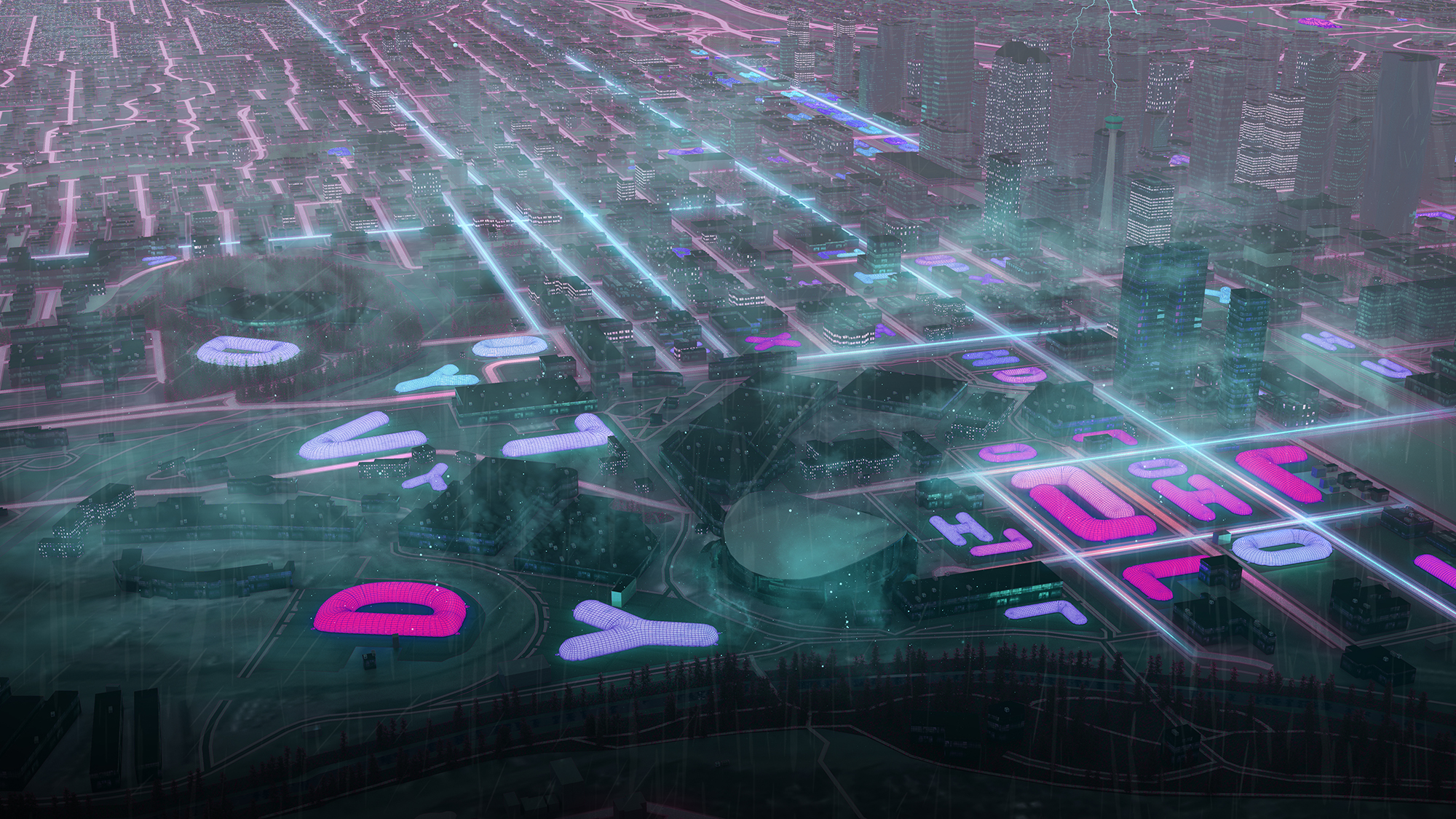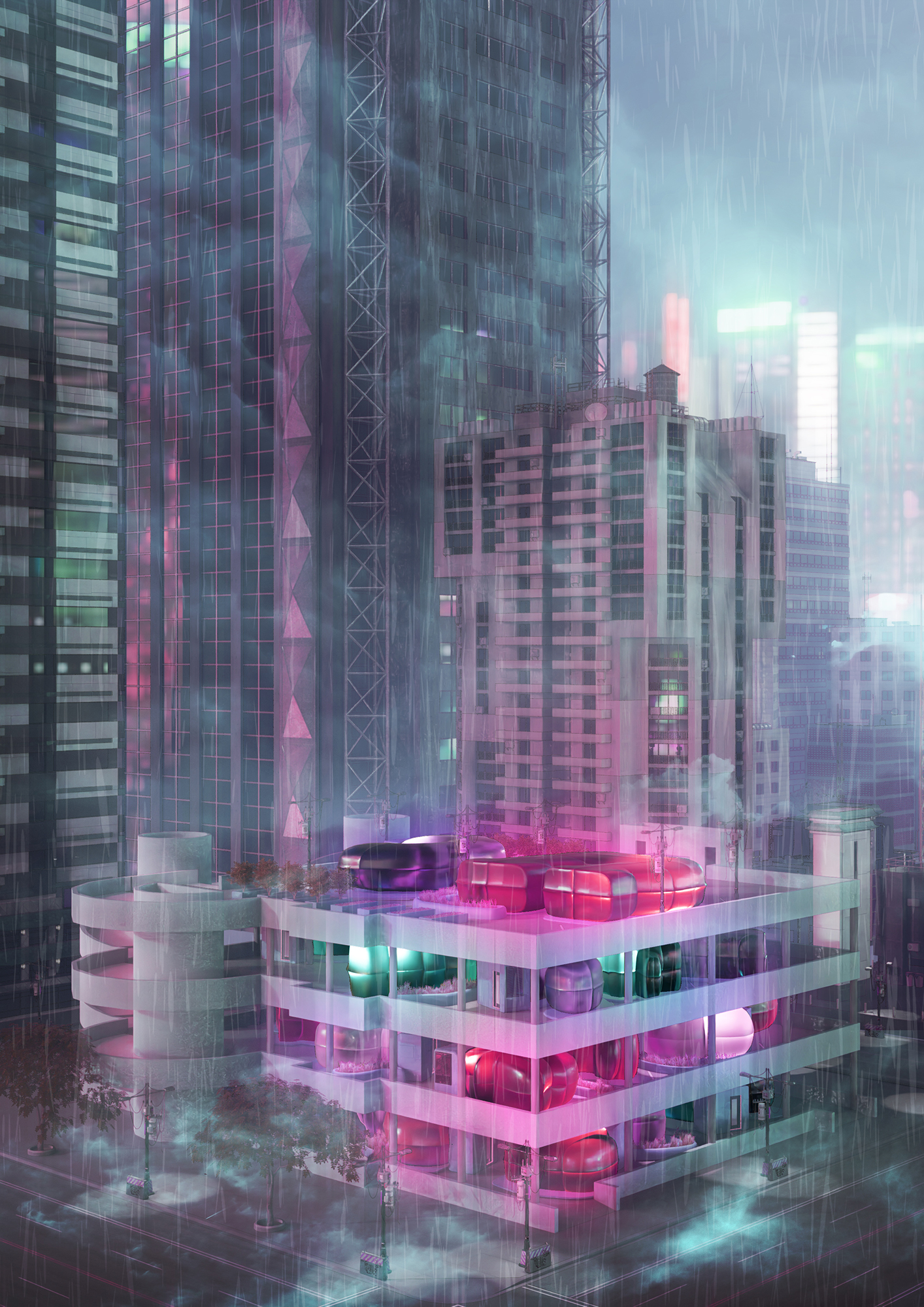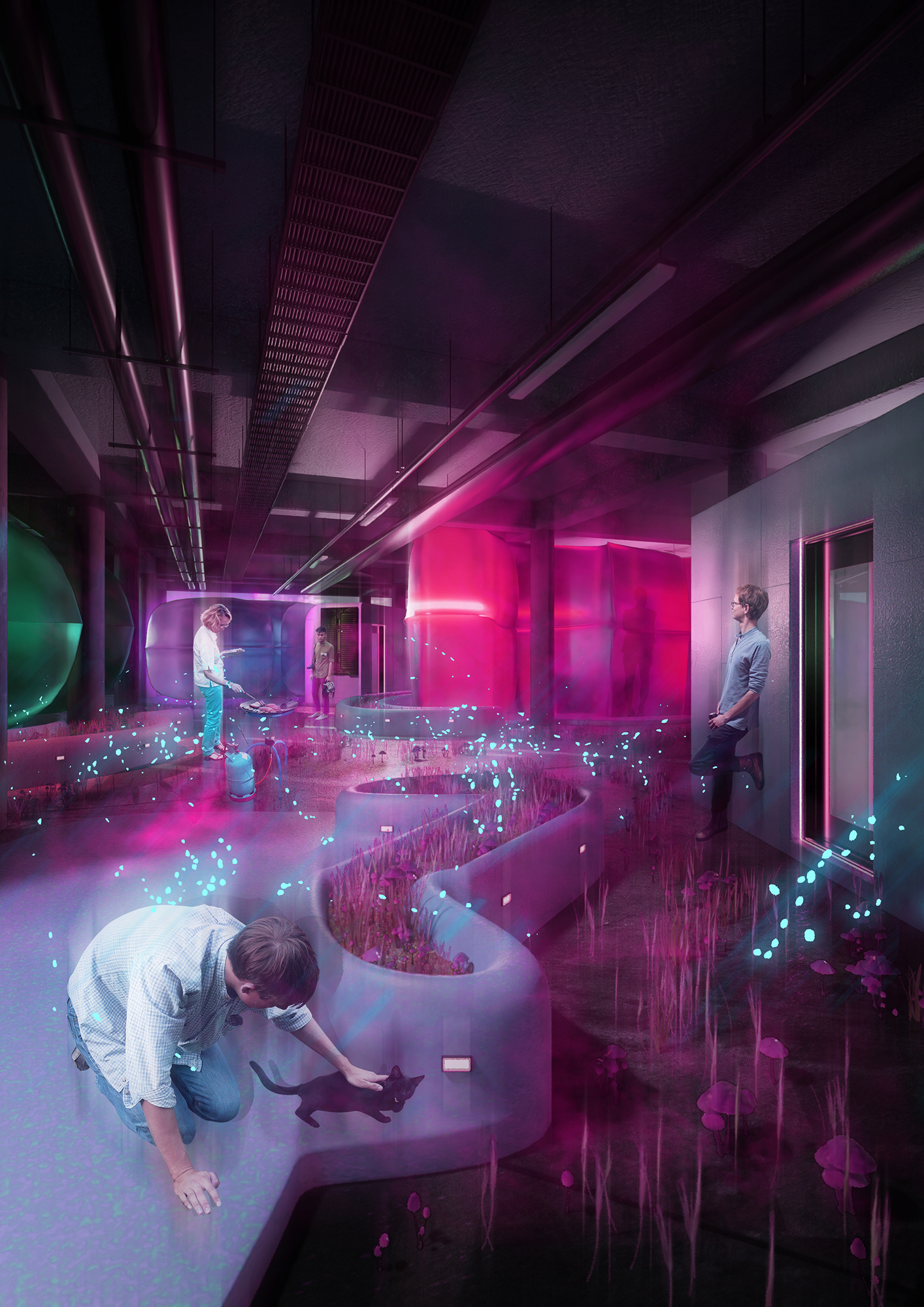The COVID-19 pandemic has exposed the fragility of existing models of housing, collective life, and infrastructure. The 99% have been disproportionately marginalized by shelter-in-place orders and quarantines that assume they have the resources to weather this moment of extreme instability. The transition from a quarantine to a post-pandemic city will not only be a fight for collective human health and wellbeing, but will also be the staging ground for our last stand to prevent a forthcoming climate catastrophe. New paradigms of urban design and civic infrastructure must be decoupled from society’s carbon-intensive practices and archaic fetishes for “solidity” in building: such as concrete and glass architectures with limited lifespans.
At the scale of the polis, Soft City, Soft Haus calls for the design and deployment of inflatable architectures within the surplus spaces of carbon-formed cities (like parking lots) that can quickly address emergency programs (like pop-up hospitals) and long-term programs (like greenhouses) as supply chains become localized. Closed environments with positive air-pressure and medical-grade HEPA filters, these soft infrastructures neutralize airborne pathogens, and lead towards a new mode of semi-permanent urbanity that moves towards a philosophy of light environmental footprints and cooperative habitation. Varying in size and program, these inflatables can slowly evolve our built environment into soft cities that sponsor new lifestyles, divest of car-based urbanism, and facilitate a more agile urban fabric that is ready to meet the challenges of an uncertain future.
At the scale of the building, Soft City, Soft Haus proposes emergency socially-distanced public housing in above-grade parking facilities. This surplus infrastructure of carbon-based urbanity—seen for its absurdity, obsolescence, and excess—is appropriated by municipalities as a convenient super-structure for socially-distanced-domestic space. With minimal modifications, the robust structural frame and excess space of the parking garage is co-opted into a generous and flexible ground for inflatable enclosures and porto-pods—a model for autonomous communal living with many configurations. These inflatables provide a multitude of spaces such as domicile units, shared kitchens, food storage, and greenhouses. The porto-pods are single occupancy residential rooms which contain the new necessities of post-pandemic housing:airlocks, sterilized bathrooms, and advanced HVAC maintaining positive pressure and medical HEPA filtration. These inflatables give the marginalized the affordance to live with social-distance and imagines a new paradigm of dwelling better suited to meet the challenges of contemporary society.
_
Authors: Alberto de Salvatierra and Dan Hapton
Additional Credits: Line drawings with assistance of Obinna Ekezie and Laura Sandor
Affiliation: Center for Civilization











